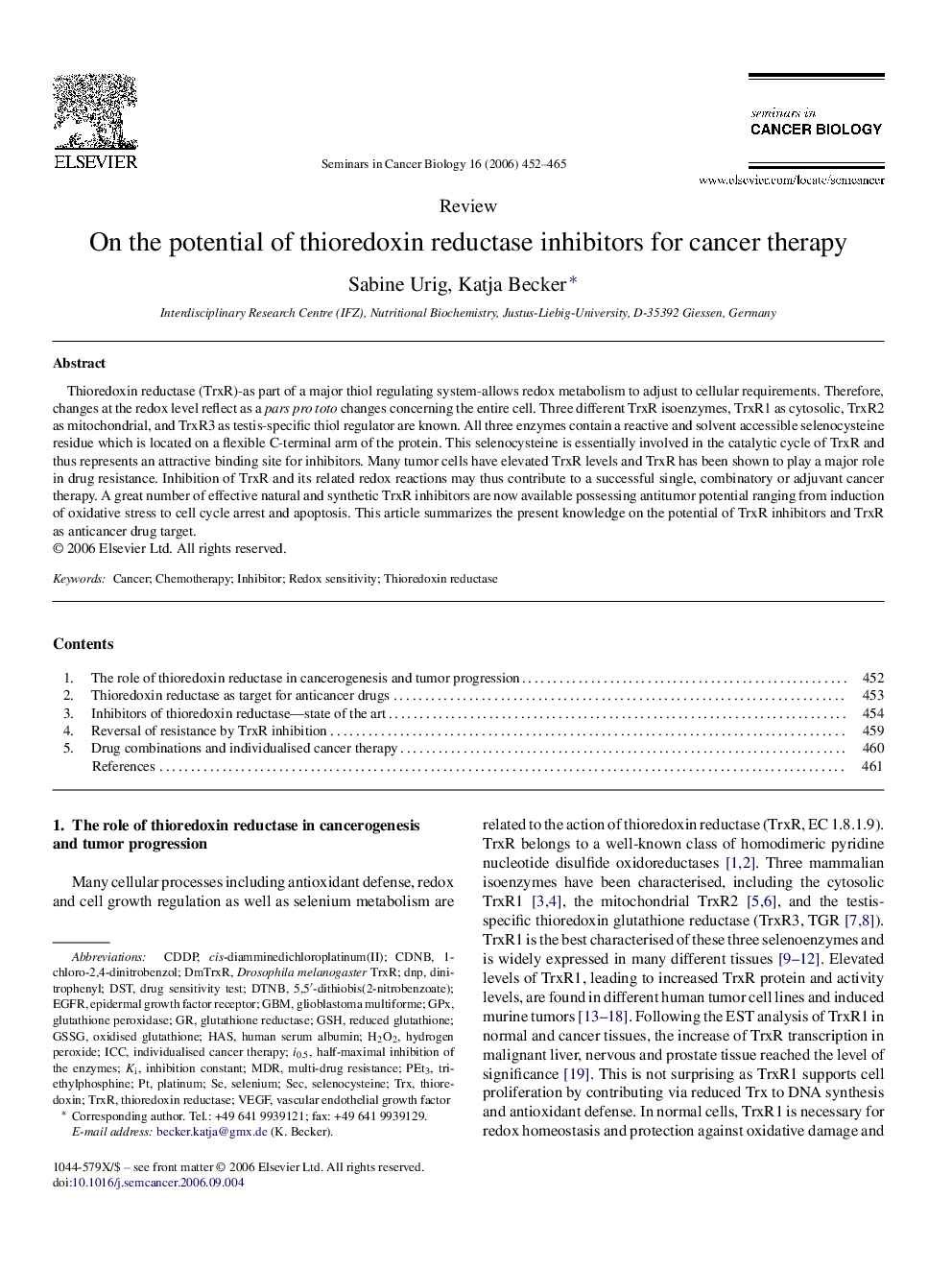| Article ID | Journal | Published Year | Pages | File Type |
|---|---|---|---|---|
| 2024120 | Seminars in Cancer Biology | 2006 | 14 Pages |
Thioredoxin reductase (TrxR)-as part of a major thiol regulating system-allows redox metabolism to adjust to cellular requirements. Therefore, changes at the redox level reflect as a pars pro toto changes concerning the entire cell. Three different TrxR isoenzymes, TrxR1 as cytosolic, TrxR2 as mitochondrial, and TrxR3 as testis-specific thiol regulator are known. All three enzymes contain a reactive and solvent accessible selenocysteine residue which is located on a flexible C-terminal arm of the protein. This selenocysteine is essentially involved in the catalytic cycle of TrxR and thus represents an attractive binding site for inhibitors. Many tumor cells have elevated TrxR levels and TrxR has been shown to play a major role in drug resistance. Inhibition of TrxR and its related redox reactions may thus contribute to a successful single, combinatory or adjuvant cancer therapy. A great number of effective natural and synthetic TrxR inhibitors are now available possessing antitumor potential ranging from induction of oxidative stress to cell cycle arrest and apoptosis. This article summarizes the present knowledge on the potential of TrxR inhibitors and TrxR as anticancer drug target.
